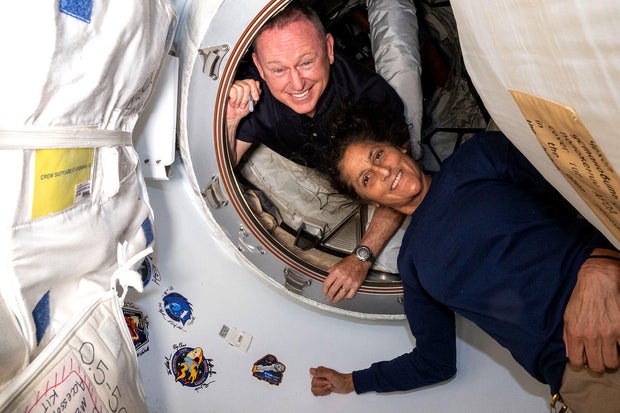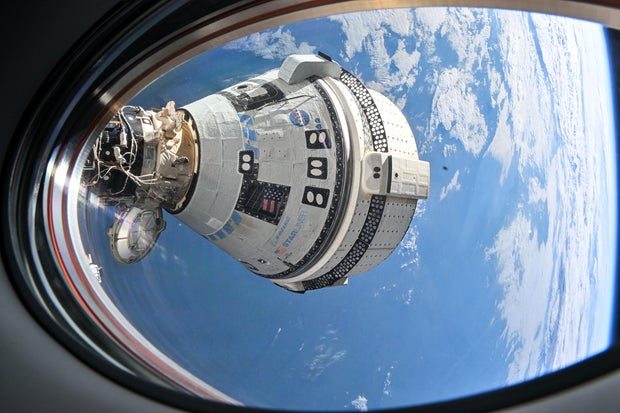After weeks of debate, NASA has approved the return of two astronauts to The Earth on board Boeing’s Starliner The capsule was abandoned due to ongoing concerns about multiple helium leaks and faulty engines, both of which are critical for a successful re-entry, officials said Saturday.
Despite successful testing of Starliner’s maneuvering thrusters, detailed analysis, and confirmation that known helium leaks in the propulsion system are stable and have not worsened, NASA concluded that there is no way to prove that the systems will continue to function normally and ensure safe deorbit, reentry, and landing.
NASA
The decision means that two of four “Crew 9” astronauts scheduled to launch to the International Space Station on September 24 aboard a SpaceX Crew Dragon will give up their seats so that the Starliner commander Barry “Butch” Wilmore and co-pilot Sunita Williams can come home in their place next February.
“NASA has decided that Butch and Suni will return with Crew 9 next February and that Starliner will return unmanned. I want you to know that Boeing worked very hard with NASA to obtain the necessary data to make this decision,” said NASA Administrator Bill Nelson. “The decision to bring Starliner home unmanned is a commitment to safety.”
Launched on June 5Wilmore and Williams, both experienced test pilots visiting the space station for the third time, had originally expected to spend just over a week in the lab on the Starliner’s first manned test flight.
They will now spend at least 262 days – nearly nine months – in orbit before returning to Earth around February 22 with the two crew members of the 9th crew, who will then complete a normal six-month service.
Wilmore and Williams will become the first astronauts in history to fly into space aboard four different spacecraft: NASA’s Space Shuttle, Russia’s Soyuz, Boeing’s Starliner and SpaceX’s Crew Dragon.
When the Starliner was launched, a helium leak was known to exist in the spacecraft’s propulsion system. During the rendezvous with the space station, four more leaks occurred and five maneuvering engines showed decreasing thrust.
NASA
NASA and Boeing spent the next two and a half months conducting tests and analysis to determine whether the spacecraft could be trusted to bring Wilmore and Williams home safely.
Boeing executives stressed that the problems were known and that NASA could indeed rely on them to return the crew members to Earth. But in the end, in the spirit of Columbia-era risk management, NASA executives decided to play it safe and scrapped plans for a manned reentry of the Starliner.
The ill-fated Starliner is now scheduled to undock from the space station’s forward port on September 6 for an unmanned re-entry and landing at White Sands, New Mexico. This brings the long-awaited test flight to a disappointing end and is the latest in a series of serious setbacks for Boeing.
With the departure of the Starliner, only the four-seat capsule Crew 8, which arrived at the laboratory last March, will be available as a lifeboat in case the four-person crew plus Wilmore and Williams need to be evacuated in an emergency before the arrival of the transfer ship Crew 9.
Although the likelihood of an evacuation is low, SpaceX will work with NASA and the station crew before the Starliner undocks to set up temporary seats in the Crew 8 Dragon that can accommodate Wilmore and Williams in an emergency.
Once the Crew-9 capsule docks, the four Crew-8 flyers completing their six-month expedition will reconfigure their ship for a normal undocking and return to Earth as planned around October 1. Wilmore and Williams will remain aboard the station while the two Crew-9 flyers launch on September 24.



